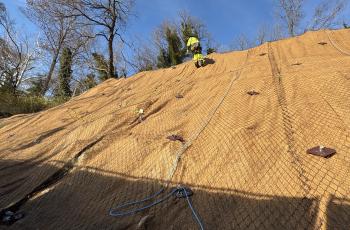| What does it mean? | Fire hydrant flow tests are conducted by DC Water at the applicant's request. The purpose of the test is to determine the hydraulic characteristics of the water distribution system at the location of their project site. This information is used by the engineer in designing the fire suppression system, calculating the size of the domestic and fire water services to the building and to size booster pump(s) if needed. |
|---|---|
| Does this apply to me? |
If the project requires a domestic service connection of 3-inches in diameter or greater or has a fire demand in excess of 100 GPM, then a hydrant flow test is needed. DC Water will require a current fire hydrant flow test be submitted with the permit application. Current means within one year of issuance of either DC Water's Water and Sewer Availability Certificate or DCRA's building permit. In accordance with NFPA code a current hydrant flow test is required to support the fire suppression system computations for the building. Flow tests are not needed by DC Water for the design of single family houses where the fire protection flow rate is less than 100 GPM. A fire supply sufficiency letter can be obtained from DC Water for small fire services (100 GPM or less) which may satisfy DCRA requirements. |
| When do I apply? | It is best to apply early - during the initial design process. A fire hydrant flow test must be obtained prior to engineering the building's domestic and fire water services for the building. The mechanical/electrical/plumbing engineer uses this information to complete the meter sizing worksheet and booster pump form. |
| What do I need to submit? |
Please have the following information in your request package:
|
| Where do I go and apply? | Please mail or drop off the application to Permit Operations Department Attn: Fire Hydrant Flow Test Request 1385 Canal Street, SE Washington, DC 20003 |
| How long will it take? |
30 days depending upon weather and emergency work load. Please note that during winter months (when the average temperature is below 40 degrees Fahrenheit) hydrant flow tests are generally not performed due to potential risk of icing and will generally take more than 30 days to be processed. |
| What do I Receive? | You will receive a report that includes the static and residual pressure of the main and the flow rate at each hydrant. Click here for a sample fire hydrant flow test report. The report will be emailed or faxed to the attention of the person on the request letter. |
| Related Activities: | For larger projects (NFPA fire demand exceeds 100 GPM), the next activity following the hydrant flow test is typically submission of the preliminary site plan to DC Water for review and subsequent approval. |
| For more Info, call: | Permit Operations Department at 202-646-8600 |
| Regulatory Info | DC Building Code and NFPA governing the fire suppression system design require a current hydrant flow test in additional to the requirement by DC Water. |
| Additional Information: |
On occasion there are hydrant flow test that have been performed on the same hydrants that you are requesting (nearby projects that you see are under construction) that may be applicable for your project. If the flow data is current it can be used in lieu of a new hydrant flow test. These results can be obtained by calling the Permit Operations Department at 202-646-8600. Please have the address of the adjacent site that you think may have the recent flow test results. |
Fire Hydrant Flow Test



